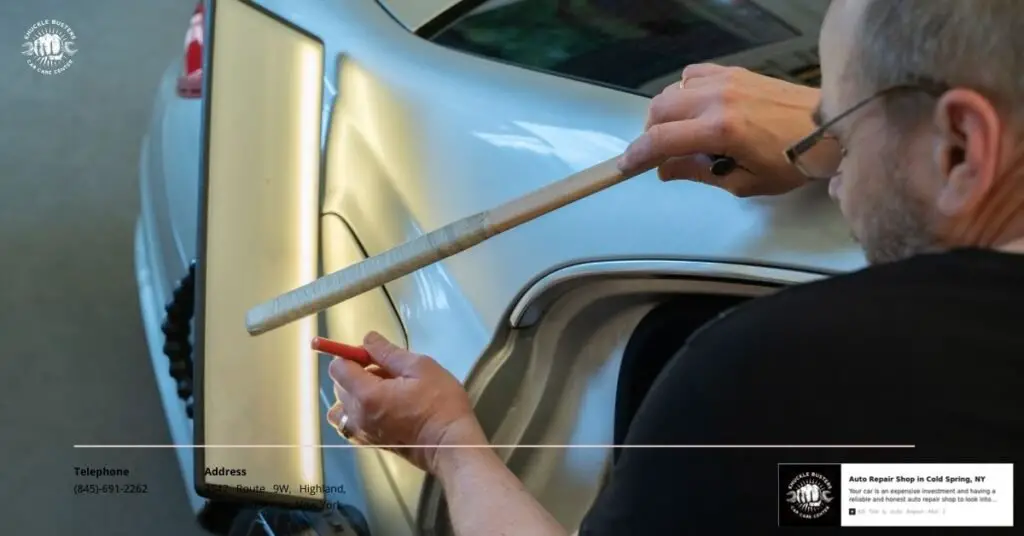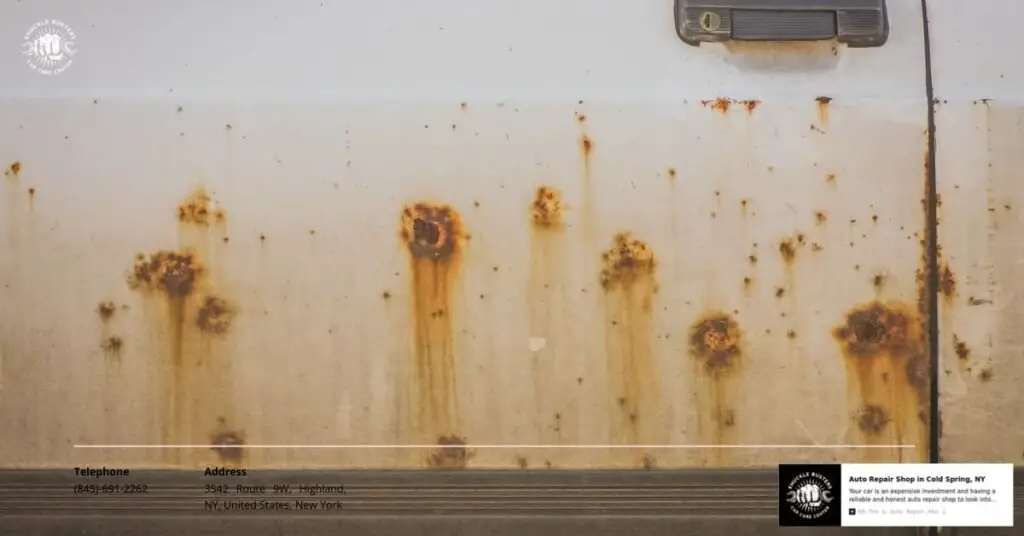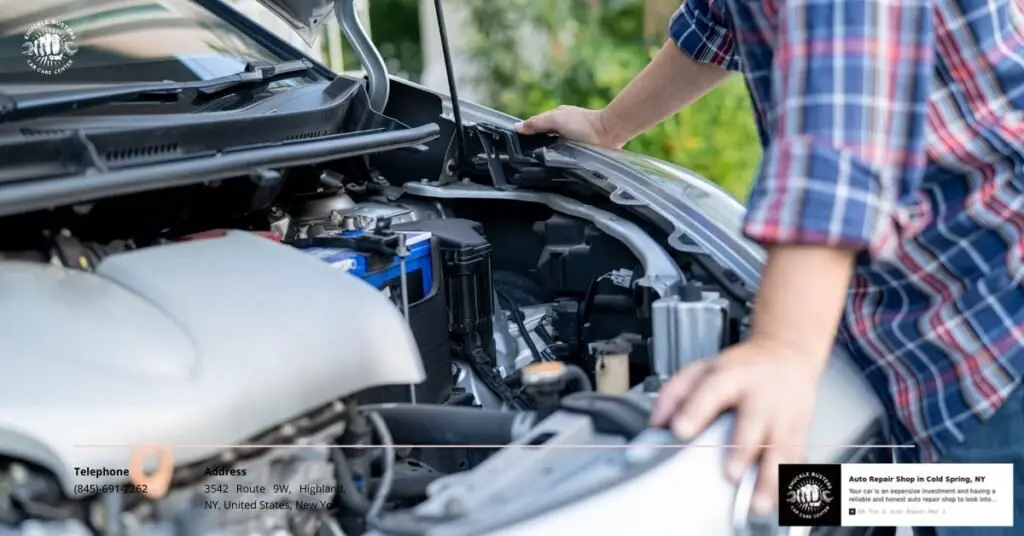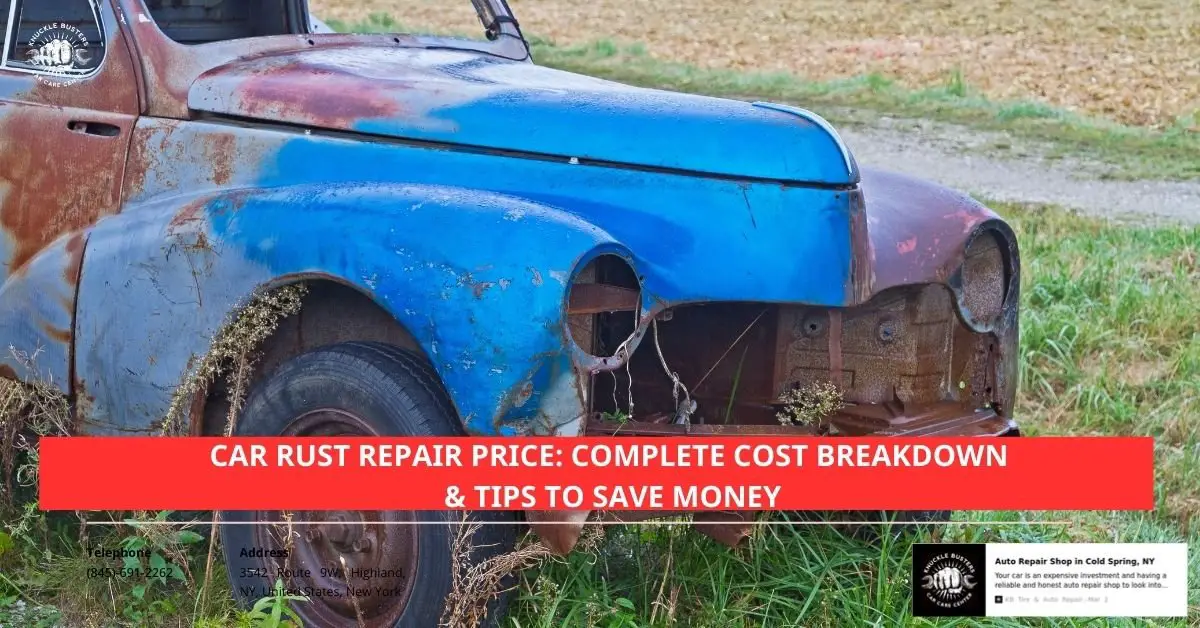- Car rust repair costs vary widely depending on the severity of damage, ranging from $50 for minor surface rust to over $3,000 for penetrating rust requiring structural repairs.
- Factors influencing repair prices include the extent of rust, vehicle type, repair methods, and geographic location, especially labor rates.
- Surface rust is the least expensive to fix, with DIY kits costing $30-$50 or professional repairs from $50-$650. More serious rust (scale or penetrating) requires professional services, increasing costs significantly.
- DIY rust repair can save money, but it’s best for minor rust. Professional services are recommended for extensive damage to ensure proper results and structural safety.
- Proactive rust prevention, such as regular washing, waxing, applying rust-proofing products, and addressing scratches promptly, helps minimize repair costs.
- Ignoring rust can escalate repair expenses, so addressing potential rust issues early is both cost-effective and vital for maintaining vehicle integrity.
Rust on our cars isn’t just an eyesore—it’s a problem that can sneak up on us and cause serious damage if left unchecked. Whether it’s a small patch on the fender or a larger issue eating away at the undercarriage, dealing with rust is something most of us dread. But how much does it actually cost to fix?
Understanding car rust repair prices can feel overwhelming, especially with so many factors influencing the final bill. From the size of the rusted area to the type of repair needed, costs can vary widely. Let’s break it down together so we know what to expect and how to keep our cars looking and performing their best.
Understanding Car Rust Repair
Car rust repair involves addressing damage caused by oxidation on a vehicle’s body. Rust forms when moisture reacts with metal, creating structural and cosmetic issues over time. Types of rust commonly include surface rust, scale rust, and penetrating rust. Each type impacts the repair process and cost.
Surface rust affects the outermost layer of metal. It can usually be fixed by sanding, priming, and repainting. Scale rust digs deeper, requiring more intense treatments, such as grinding or replacing the affected areas. Penetrating rust causes holes in metal, often leading to more expensive repairs like panel replacements.
The repair process starts with a detailed inspection. Professionals assess the rust’s severity and its impact on the surrounding metal. This evaluation dictates the method and materials needed for restoration, ensuring that the damage doesn’t spread further.
Using proper materials and equipment is crucial for effective rust repair. Tools like sanders, grinders, and rust converters help remove corrosion, while primers and paints prevent new rust. Skilled repair professionals ensure that repairs restore the vehicle’s appearance and structural integrity.
Factors That Affect Car Rust Repair Price

Car rust repair costs depend on several variables that influence the effort, time, and materials required. Understanding these factors can help clarify the pricing and set realistic expectations.
Extent Of Rust Damage
The level of rust damage plays a significant role in pricing. Surface rust, affecting only the paint layer, typically costs $50–$650 to repair. For scale rust, which penetrates deeper into the metal, costs can increase to $150–$500 due to the need for sanding, filling, and painting. Penetrating rust, which compromises structural integrity, is the most expensive, ranging from $1,000 to $3,000 or more, as panel or frame replacements are often required.
Type Of Vehicle
The vehicle type impacts repair costs. Luxury cars or rare models may demand more expensive materials, specialized paints, or professional expertise, increasing costs. Conversely, common vehicles are often less costly to repair due to readily available parts and standard service processes.
Repair Method Used
The methods employed in rust repair influence costs. Minor surface rust may require only sanding and repainting, a relatively inexpensive process. Scale rust often needs additional filling and priming before painting, which raises the labor and material expenses. For penetrating rust, extensive repairs like replacing panels or welding can make this the costliest option.
Location And Labor Costs
Repair costs vary based on geographic location and labor rates. Urban areas or regions with high demand for skilled labor often have higher repair charges. Conversely, rural areas typically feature lower labor costs, which can make rust repair more affordable. Local availability of skilled repair technicians also impacts pricing.
Common Rust Repair Methods And Their Costs

Rust repair costs depend on the type and severity of damage. Understanding these costs helps in choosing the right repair method to restore a car’s condition.
Surface Rust Repair Costs
Surface rust only affects the top layer of paint and metal, usually caused by minor scratches or chips. It’s the easiest rust type to address.
- DIY Costs: A rust treatment kit typically costs around $30-$50. These kits include sandpaper, primer, and paint.
- Professional Costs: Repairing surface rust through a professional autobody technician costs between $50-$100 for small areas. Larger sections may cost up to $650 if rust covers more extensive surfaces.
Scale Rust Repair Costs
This type happens when surface rust penetrates deeper into metal, necessitating more extensive repairs. It’s more labor-intensive and requires careful attention to the corroded area.
- Repair costs range from $150 to $500 based on the size of the affected area. Heavily corroded panels or difficult-to-reach locations may push the cost toward the higher end of the range.
Penetrating Rust Repair Costs
Penetrating rust compromises a vehicle’s structural integrity by eating through metal components. Repairing it is the most complex and expensive process.
- Costs typically start at $1,000 and go up to $3,000 or more. Severe cases often involve replacing metal panels or structural components, leading to higher expenses.
DIY Rust Repair Vs. Hiring A Professional

Addressing car rust involves critical decisions, including whether to tackle it ourselves or rely on professional services. Each approach has unique advantages and disadvantages depending on the severity of rust and our available resources.
Pros And Cons Of DIY Repairs
DIY rust repair offers affordability and convenience for minor surface rust. Kits typically cost $30-$50, including sandpaper, primers, and rust converters. It’s an excellent option for those with simple damage, such as small patches on doors or fenders.
However, DIY repairs carry risks. Incorrect application of materials may fail to stop rust progression, leading to costlier repairs later. Scale or penetrating rust, which compromises structures, demands expertise we might not possess. Restoring those requires advanced tools and techniques beyond standard DIY kits.
Benefits Of Professional Rust Repair Services
Professional services ensure precise rust removal and lasting results. Experts assess damage, select proper methods, and use high-grade materials. For scale rust, professionals perform sanding, filling, and repainting efficiently within costs of $150-$500, depending on damage size.
Severe penetrating rust is best handled professionally as repairs often involve replacing compromised panels, costing $1,000-$3,000. Professionals also warranty their work, offering peace of mind if further issues arise. While costlier, their services restore both appearance and safety effectively.
Tips To Minimize Car Rust Repair Costs

- Address Rust Early
Repair costs stay lower when we tackle surface rust promptly. Small rust spots typically cost $50-$650 to repair but can escalate to $1,000 or more if ignored and allowed to progress into scale or penetrating rust.
- Wash and Wax Regularly
Washing our cars at least every two weeks removes dirt, road salt, and moisture that accelerate rust. Applying wax every three months creates a protective barrier, reducing the need for frequent repairs.
- Inspect Vulnerable Areas
We can spot rust early by routinely checking wheel wells, undercarriages, and door frames. Addressing damage before it penetrates metal layers avoids expensive structural repairs.
- Park in Sheltered Areas
Parking in garages or shaded areas limits exposure to rain, snow, and humidity. Keeping cars dry slows down oxidation, which often leads to rust.
- Apply Rust Proofing Products
Using sprays or sealants provides an extra layer of protection. Rust prevention treatments, costing around $100-$500, save money compared to extensive rust repairs.
- Manage Chips and Scratches
Fixing paint damage quickly prevents rust formation. Touch-up paint kits cost around $20-$50, making it an affordable way to avoid future escalation.
- Be Cautious with DIY Repairs
While DIY solutions can save money, improper treatment may worsen damage. For severe rust, seeking professional guidance avoids costly mistakes and ensures a lasting fix.
Conclusion
Rust repair doesn’t have to be overwhelming when we understand the factors that influence costs and the options available. By staying proactive and addressing rust early, we can save money and extend the life of our vehicles. Whether we choose DIY solutions for minor issues or professional services for more severe damage, taking action is key to preserving both appearance and safety. Let’s keep our cars in great shape and rust-free for the road ahead!
Frequently Asked Questions
What causes rust on cars?
Rust forms on cars when metal surfaces are exposed to moisture and oxygen, leading to oxidation. Factors like road salt, chipped paint, and scratches can accelerate rust formation.
How much does it cost to repair rust on a car?
Repair costs vary based on the type of rust. Surface rust repairs range from $50 to $650, scale rust costs about $150 to $500, and penetrating rust repairs can exceed $1,000.
Can I repair car rust myself?
Yes, minor surface rust can be repaired with DIY kits costing $30-$50. However, severe rust types often require professional expertise for safe and effective repairs.
What is the difference between surface rust, scale rust, and penetrating rust?
- Surface rust: Affects the top layer of paint and metal.
- Scale rust: Damages deeper layers, requiring sanding or specialized treatments.
- Penetrating rust: Compromises structural integrity, necessitating metal panel replacements.
How can I prevent rust on my car?
Wash and wax your car regularly, park in sheltered areas, apply rust-proofing products, and quickly repair chips and scratches to prevent rust formation.
Are professional rust repairs worth the cost?
Yes, professionals provide precise, long-lasting repairs backed by warranties, particularly for severe rust damage. This ensures both safety and aesthetic restoration.
What happens if car rust is ignored?
If untreated, rust spreads and weakens the vehicle’s structure, leading to costly repairs or even making the car unsafe to drive.
Does rust repair affect a car’s resale value?
Yes, addressing rust enhances a car’s appearance and structural integrity, increasing its resale value compared to a vehicle with visible rust damage.
Are luxury or rare cars more expensive to repair for rust?
Yes, luxury and rare cars often require specialized materials and expertise, leading to higher rust repair costs.
How can I save on rust repair costs?
Address rust early, maintain regular car care, and prevent scratches or chipped paint. Early prevention often avoids costly, extensive repairs.
